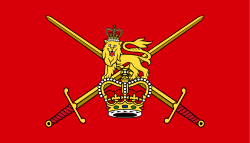 |
| Arms of the British Army |
|---|
| Combat Arms |
| Combat Support Arms |
| Combat Services |
|
The Scottish, Welsh and Irish Division is a British Army Infantry command, training and administrative formation for Scottish, Welsh and Irish line infantry regiments.
 |
| Arms of the British Army |
|---|
| Combat Arms |
| Combat Support Arms |
| Combat Services |
|
The Scottish, Welsh and Irish Division is a British Army Infantry command, training and administrative formation for Scottish, Welsh and Irish line infantry regiments.
In 2016, following the further planned reorganization of the Army that was started under the 2010 SDSR, the Ministry of Defence announced that the Prince of Wales' Division was to be disbanded. The three infantry regiments that formed the Prince of Wales' Division would be reassigned, with the Mercian Regiment transferred to the King's Division, while the Royal Welsh and Royal Irish Regiment would move to the administration of the Scottish Division, bringing together all three remaining non-English line infantry regiments. Taking into account the new formation, the division was announced as being renamed to the Scottish, Welsh and Irish Division. [1]
The command was officially "stood-up" in April 2017, [2] with the first troops having their passing out ceremony from the Infantry Training Centre at Catterick in August 2017. [3]
The division consists of the following units.
Regular Army units
Army Reserve units